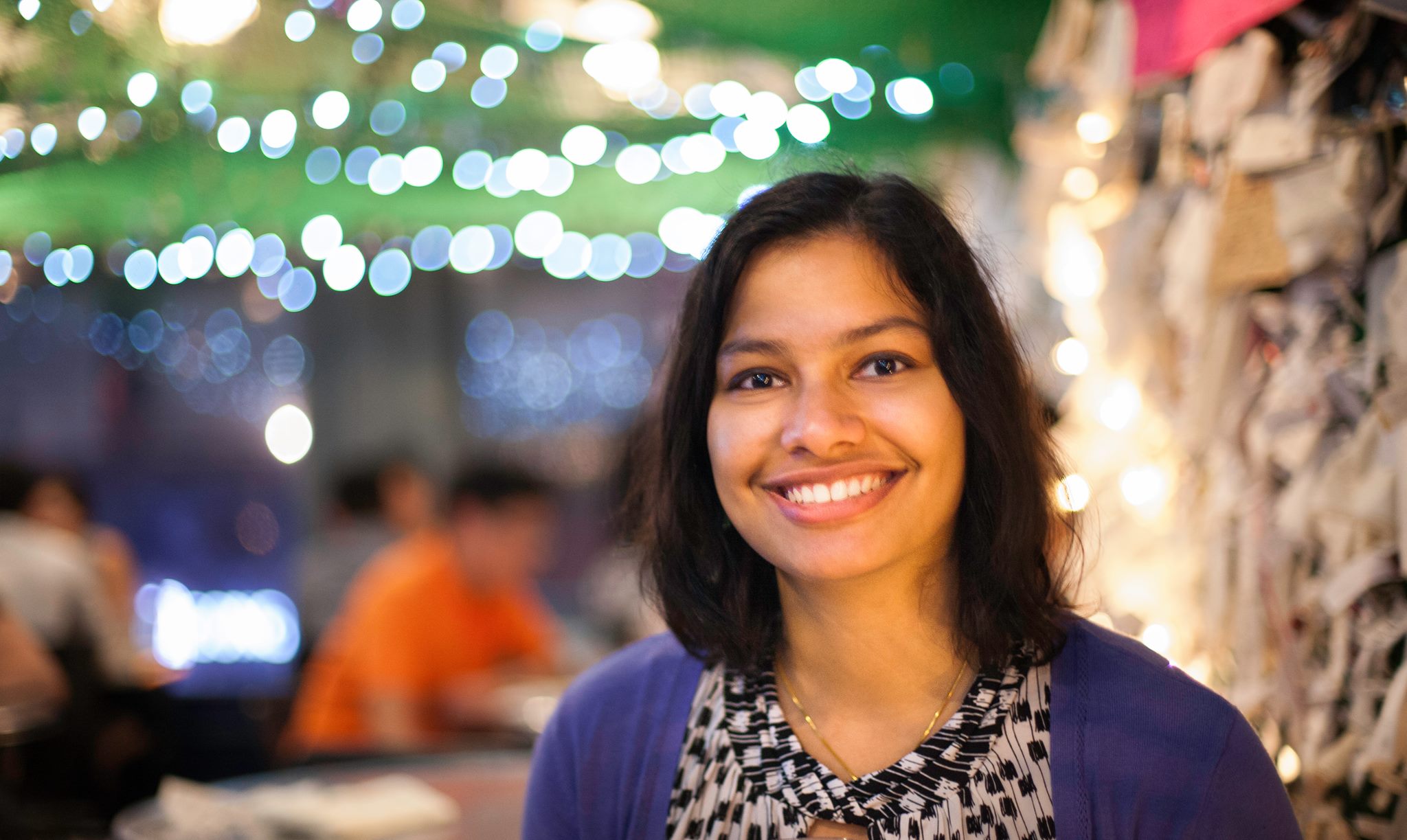
Where did you grow up?
I was born in Bhubaneswar, India and lived in Philippines before moving to the United States. Most of my childhood was spent in Baton Rouge, Louisiana. I grew up asking lots of questions, ranging from the science behind my father's work to my South Asian roots. My parents tried to satisfy my curiosity by signing me up for lessons in music and Bharatanatyam (an Indian classical dance form). Much of my identity was shaped and woven from dance, music, and science, and my hometown was a nice setting to that development.
What spurred you to take South Asia related courses?
As someone who continues to dance and perform Indian classical dance styles in college, I was initially drawn to Professor Miner's class on "Performing Arts in South Asia." It was from there when I realized that the SAST department had a wide array of interesting classes that interconnected with one another. The diversity of course offerings, as well as the breadth and depth it offered, was especially appealing to me.
What types of courses have you taken?
My interests in South Asia are rather broad, but most of my courses have related to both religion and music. Although these initially appear to be unrelated topics, the SAST department offers courses on both in separate and combined contexts. These courses have ranged from studying about religions in Southeast Asia to learning sitar.
Why have you decided to major in SAST?
I have always had an interest in South Asia. However, when I first entered college, I had never planned to major in South Asia Studies. The availability and flexibility of classes in the department, as well as the interdisciplinary nature of the SAST major, encompasses the studies of history, religion, society, and art in the past and contemporary context and has spurred me to major in SAST.
What are your favorite things about the South Asia Studies major?
One of the greatest strengths of the SAST major is the ability to take a wide array of classes that support many interests. The SAST department recognizes that there is more than one way to approach the vast region of South Asia, and it is extremely flexible working with students on making sure that those interests are kept in priority. The classes within the department are taught by engaging professors who make sure that you enjoy and fully understand the material, both in and out of class. They're passionate about their subject, and that enthusiasm is contagious in class.
What do you think will be your next steps once you leave college?
My next plans are to matriculate into an MD/PhD program after graduation. Beyond that, it is a lifelong goal of mine to continue learning other instruments and dance forms of South Asia.

 South Asia Studies
South Asia Studies